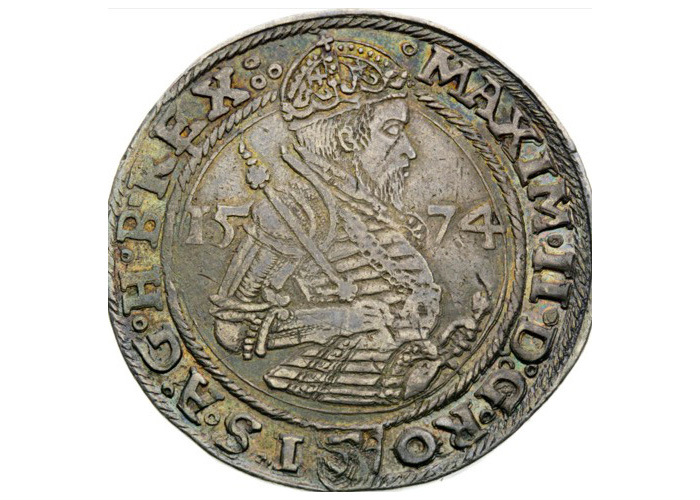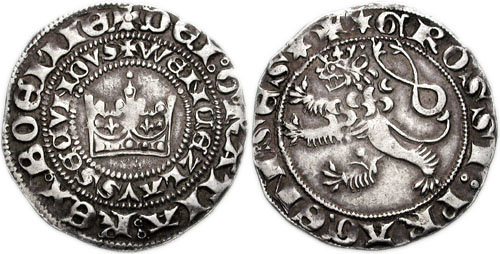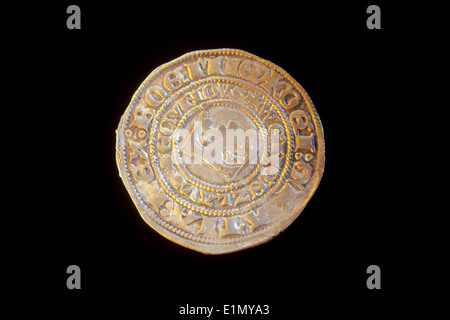The process of creating a plaster mold, or "maquette" based on an actual gold coin or medal design is a process that involves a number of steps to convert the two-dimensional model into a three-dimensional physical representation. of the design. Design Reference- The artist or designer takes the gold coin or medal design as a reference. The design can be created either digitally or with graphic design software. It could also be a hand drawn sketch. Other materials, such as clay or wax might also be used.
The preparation of Plaster is mixed with water to create a workable consistency. To ensure a clean mould the mix must be smooth and free of lumps.
Base Creation- To create the maquette the maquette, a platform or base must be created. This base could be a wood board or a flat surface that provides stability.
The sculpting Maquette Artists use the design of gold to guide him in creating a sculpture of it in the plaster. The plaster is shaped to form a relief or three-dimensional image of the coin or medal.
Detailing and Refinement- The artist is focused on bringing in details while refining the contours and ensuring the accuracy of the proportions and features of the design. This process requires accuracy and focus.
Allowing for drying and settingAfter the sculpting process is done, the sculpted has to be allowed to set and dry. This allows the maquette's shape to remain and also for hardening.
Finishing the Maquette- After drying, the surface will be smoothed further to remove any bumps or rough areas.
Preservation and Sealing- In order to preserve the maquette for subsequent processes like scanning, or molding it may be coated with the sealant.
The final plaster maquette functions as a tangible, 3D depiction of the gold medal or coin design. It's used as a reference point for further stages in the process of production, such as scanning to create digital replicas, creating molds for mass production, or as a model for artists to visualize and refine the design prior to final production. Have a look at the best Prague Mint gold coins plaster molds more recommendations. including 1 10 oz gold eagle, 5 cent piece, oz gold bars, gold and coin dealers near me, gold panda coin, 1 ounce gold bullion, 24k gold coin, gold bullion price, bullion dealers near me, gold coins near me and more.

How Can The Janvier Machine Transfer The Gold Coin Or Medal Design To The Working Hub From The Master?
The Janvier machine (also known as pantographs, or reduction machines) is a specific device that transfers an image of a coin or medal from the master hub onto the working hub. Here is a quick overview of the Master Hub Creation.
The master hub is the original die or mold that carries the exact layout of the coin or medal. It's made with the highest quality CNC manufacturing.
Setup for Janvier Machine-
The Janvier machine is comprised of a stylus that traces the design onto the master hub, and a cutting tool that replicates this design onto the working hub.
The Janvier machine's master hub, which acts as a model from which the design can be copied, is mounted securely on the machine.
Tracing Design-
The Janvier machine uses stylus that follows the contours and detail of the design. When the stylus travels across the surface, it record the design's profile.
Reduce the Design
The Janvier machine also replicates the traced pattern onto the working hub. The hub is usually made from a softer material like nickel or steel, as opposed to the hub used in the master.
The cutting tool reduces, or duplicates the design on the hub that is working at a reduced or smaller size compared to the hub that is master. This reduction is essential for the process of coining since it allows medals and coins to be struck at the sizes desired.
Accuracy and precision
Janvier’s machine works with precision and ensures a perfect transfer of design data from the master machine to the work hub. It is able to reproduce even the most minute details and contours.
Quality Control
The final working hub undergoes quality tests to make sure it meets the specifications to strike and is exact.
Further Processing
The hub of work created by the Janvier machine is used to aid in the coin or medal striking process. The die or mold is used to create multiple medal or coin blanks based on the design that was transferred.
Janvier machines are vital to the production of coins and medals. They permit the exact reproduction of intricate coin or badge designs. The working hubs can then be used in the production process for mass production of coins or medals. Read the top janvier processing Czechoslovakia gold medals website recommendations. including 1979 gold dollar, 10oz gold bars, 20 dollar gold coin, coins and gold, 24 karat gold coin, 50 dollar gold piece, $50 gold piece, kruger rand, gold coins for sale near me, gold silver bullion and more.

How And Why Are Gold Blanks Of High Quality Measured And Weighed Before The Minting Process Starts?
The process is followed to produce gold coins and medals that are of the highest quality. This is the procedure which is followed: Preparation of Gold Material selection- Only high purity gold is used for making blanks. The gold is refined to meet requirements for purity required to be used in coinage.
Gold Blanks are created through blanking. Blanking is a process that involves cutting coins-sized disks, or planchets, out of the gold.
Precise Measuring and Weighing
Weighing. Each blank is separately weighed, to make sure it meets all the specifications of the coin. This method ensures that each piece has the exact amount of gold needed for the denomination intended for.
Measurements- Every blank is measured to ensure that it complies with the specifications of the design and has a uniformity.
Inspection and Quality Control
Visual Inspection - Each blank is visually examined to identify imperfections on the surface or other imperfections that could impact the quality of the final product.
Rejecting Sheets that Are Not Conforming - To ensure uniformity, blanks that do conform to the standards required for dimensions, weight or quality are rejected.
Why should you prepare?
Consistency of Minting Process. Weighted precisely and measured blanks ensure uniformity throughout the process of minting. Consistency is essential to ensure uniformity during the process of striking, which will result in medals or coins having the same quality.
A precise gold contentThe precise weight of each blank guarantees that the final medal or coin contains the desired quantity of pure, accurate gold.
Uniform Blanks Help Prevent Variations Uniform blanks can keep from weight or size variations which could affect the legality, value, and usefulness of a coin or medal in circulation or in commerce.
Quality Assurance - Strict measures of quality control throughout the process of making blanks ensure that only top-quality free of defects are taken to the minting stage to reduce the risk of flaws showing up on the finished product.
Legal Compliance- Uniformity and conformity to specifications is essential when it comes to coins designed for use in commemorative or circulation reasons, ensuring that they meet legal requirements and standards set by regulatory bodies or mints.
Preparing high-quality blanks with accuracy and precision is an essential part of the process of minting. This ensures the production of accurate gold coins and medals that are of high in value and complies with the law. View the top gold blanks for Czechoslovakia gold medals more tips including gold price coin today, gold dollar, 1 0z gold, krugerrand gold coin, american eagle gold coin, five dollar gold coin, krugerrand gold coin, euro coins, purchasing silver bars, bullion dealers near me and more.

Why And How Gold Coins Or Medals Undergo Processes To Create An Aged Or Antique Appearance?
There are many reasons to do this, such as aesthetic preferences as well as historical or collector's demands Gold coins and medals are able to be reprocessed to give them an aged or antique appearance. This is the way and how it's done.
Chemical Patination- Chemical processes that induce patina using acids or solutions are applied on the surface of the coin or medal. These solutions are used to achieve a precise amount of oxidation that creates the appearance of an older or vintage coin. This process can highlight the particulars of your design, and provide depth.
Artificial Aging The use of chemical or mechanical methods can be employed to simulate the natural wear that comes with time. Tools or treatments that are abrasive may cause scratches or worn areas to give the coin an aged appearance.
Toning and staining: Specialized solutions, or heating treatments are used to stain or tone the surfaces. This results in a range of hues and shades. This process can replicate the discoloration, toning and fade that occurs naturally over time.
Buffing and Polishing Techniques A specific area is selected to be polished or buffed to remove the layer of surface or highlight, creating contrast or giving an appearance of wear or aging.
What are the motives behind making an antique look?
The look of antique is appealing to some collectors and enthusiasts. The look of aging adds character to the design distinctiveness, depth, and also makes it attractive visually.
Historical or Commemorative Significance- Medals or coins that commemorate historic events or periods may undergo aging processes that create an atmosphere of historical authenticity or to mimic coins from a particular era.
Increased Collectibility- Antiqued coins or medals frequently appeal to collectors searching for rare or limited-edition pieces. The age-related appearance can boost the value of their collectibles and appeal to buyers.
Highlighting Design Details - Aging processes can highlight the intricate details of the design by creating contrast between recessed and raised areas, which makes the design elements more prominent and obvious.
Artistic Expression: Minting authorities or artists can employ the aging technique as a means of artistic expression to add depth, narrative, or even symbolism.
Give a vintage look to gold coins and other coins as an intentional art choice. It may evoke feelings of nostalgia, add interest to the eye, or even convey historical information. The aesthetics have to be weighed against the coin's value and authenticity. Follow the most popular antique finish of Czechoslovakia gold medals more recommendations. including gold and silver coins, buy gold silver, 1 10 oz gold eagle, american buffalo coin, silver double eagle, 1oz of gold, gold piece price, gold buffalo, price of 5 dollar gold coin, golden and silver and more.
